There's a moment each autumn when Britain's woodlands and open moorlands transform into ancient amphitheatres. The air grows crisp, leaves surrender their summer green, and across the landscape rises a sound that has echoed through these islands for millennia: the bellowing of stags. It's a noise that stops you in your tracks, primal and haunting, speaking to something deep in our evolutionary memory.
The bellowing you hear from September through November isn't random vocalisation. It's the sound of the rut, the annual breeding season when male deer compete for the right to mate with females. For stags, this period represents the culmination of an entire year's worth of energy investment. They've grown their antlers, built their body condition, and now they must prove their worth in one of nature's most demanding contests.
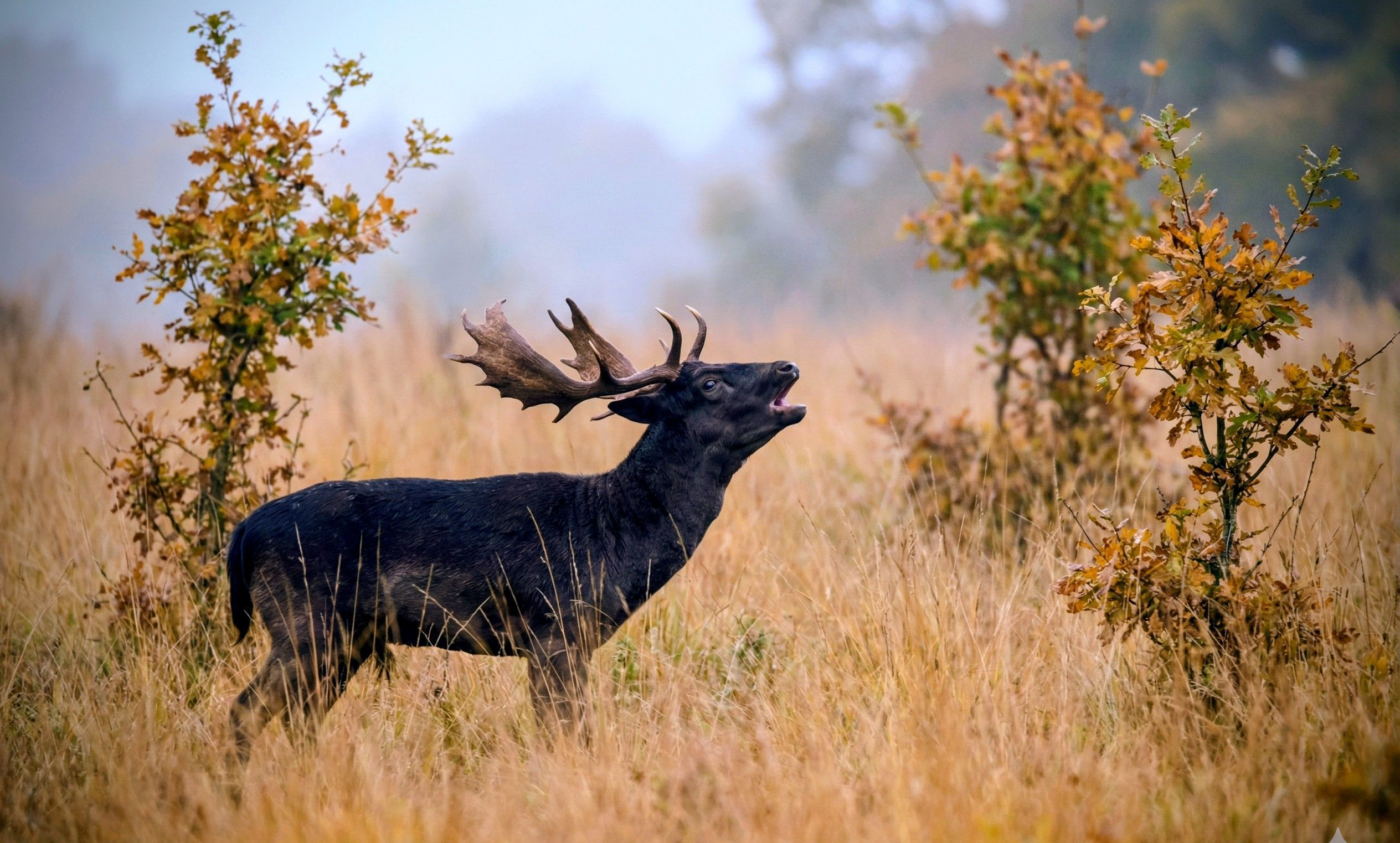
Stand in the position of a red deer stag for a moment. You've barely eaten in weeks, your testosterone levels are surging, and you're surrounded by rivals. Your throat vibrates as you throw back your head and release a roar that carries across the glen, a declaration that reverberates through your entire body. This isn't just noise, it's a complex communication tool that tells other males about your size, strength, and determination, while simultaneously advertising your genetic quality to watching hinds.
Britain is fortunate to host two main species of bellowing deer, and their vocal performances are remarkably different. The red deer, our largest native land mammal, produces a deep, guttural roar that can carry for over a mile across open terrain. It's a bass note that seems to emerge from the earth itself, often developing into a series of roars that increase in intensity as rival stags approach one another.
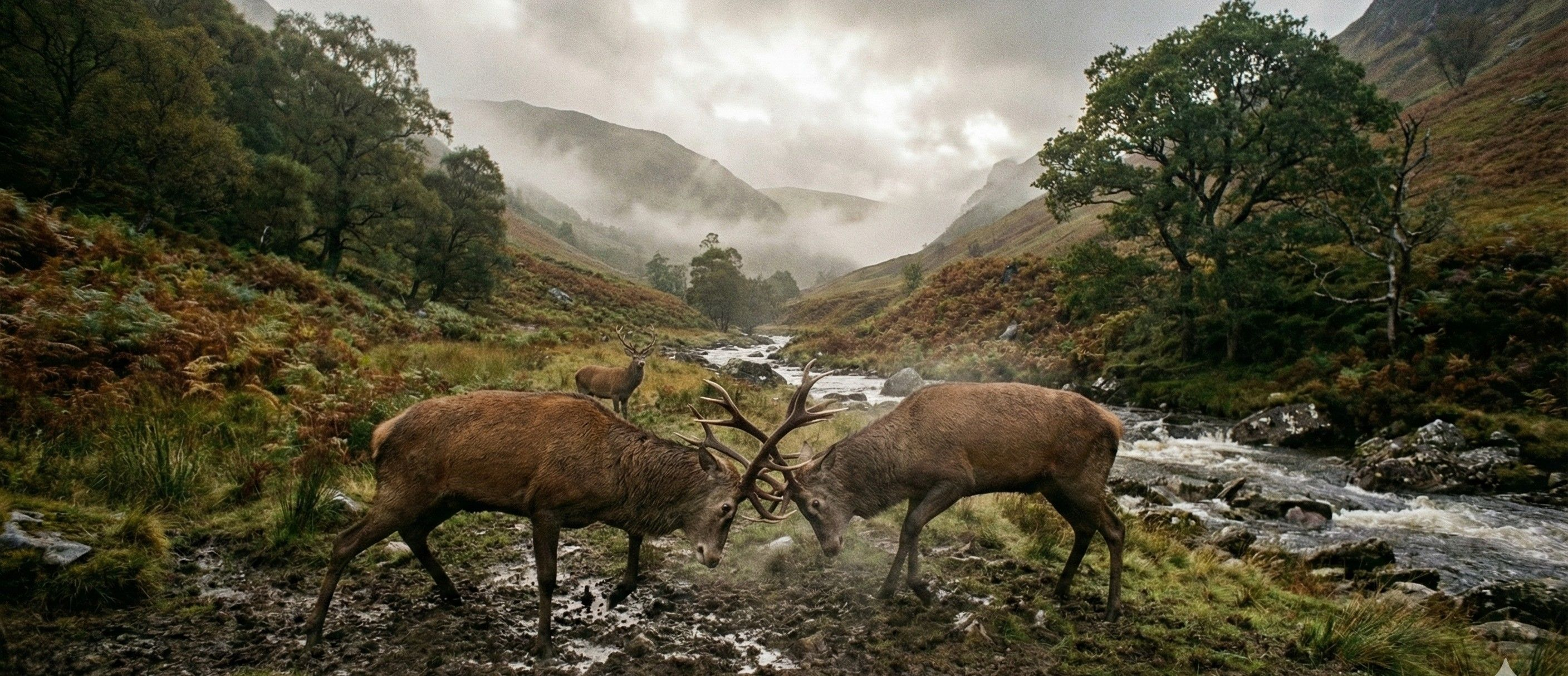
The fallow deer's contribution to autumn's chorus is altogether different. Their groaning belch might lack the majesty of the red deer's roar, but it's equally effective. Listen carefully and you'll hear a rhythmic, rasping sound, almost mechanical, like an old gate creaking in the wind. Fallow bucks produce this during their slightly later rut, which peaks in late October. The sound is lower in pitch than you might expect from a smaller deer, created by air passing through the larynx in a controlled, repetitive pattern. LettsSafari parks support a number of black fallow deer, and their Autumn and winter antics are a sight to see.
These autumn symphonies represent more than just breeding behaviour. They're indicators of ecosystem health and the success of rewilding efforts across Britain. In areas where deer populations are managed thoughtfully, as part of broader landscape restoration projects, the rut becomes a spectacular example of natural processes reasserting themselves. LettsSafari parks demonstrate how fallow deer, allowed to behave naturally within a rewilded landscape, create structural diversity in vegetation through their rutting territories. The constant movement and selective grazing of hinds following successful bucks creates a mosaic of habitats that benefits countless other species.
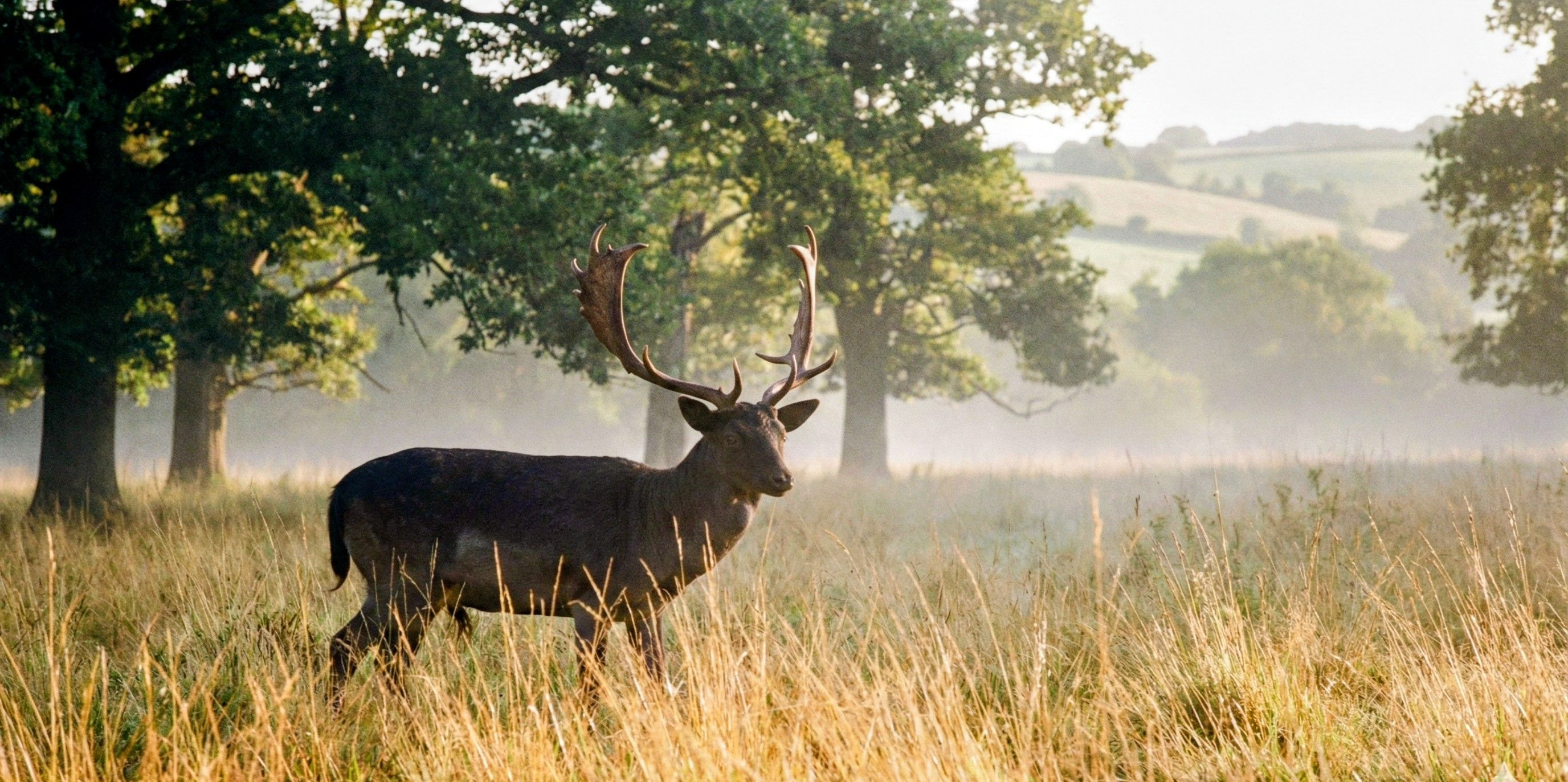
Imagine yourself as a subordinate red deer stag, perhaps six years old, watching a mature twelve-year-old master stag patrol his harem. He roars approximately once every minute during peak activity, his breath condensing in the cold morning air, each bellow requiring significant energy expenditure. You edge closer, testing his resolve. His roar changes, becoming more aggressive, shorter, more frequent. His head lowers, antlers pointing toward you. The message is unmistakable.
Here's something most people don't realise: the bellowing actually escalates through distinct phases before stags resort to physical fighting. It's an energy-conservation strategy evolved over millions of years. Most contests are resolved through this vocal sparring, with the weaker or less committed animal withdrawing before antlers clash. When fights do occur, they're brief but intense, and the roaring continues throughout, each stag attempting to literally push the other backward while maintaining their vocal display. They lock horns to attempt to wrestle the opponent to the ground - not to stab them.
What makes this spectacle even more remarkable is its cost. A rutting red deer stag can lose up to 20% of his body weight during the season. He barely feeds, constantly patrols his territory, serves receptive hinds, and maintains his vocal presence. The bellowing itself requires significant energy, coordinating muscles in the chest, throat, and diaphragm to produce maximum volume.
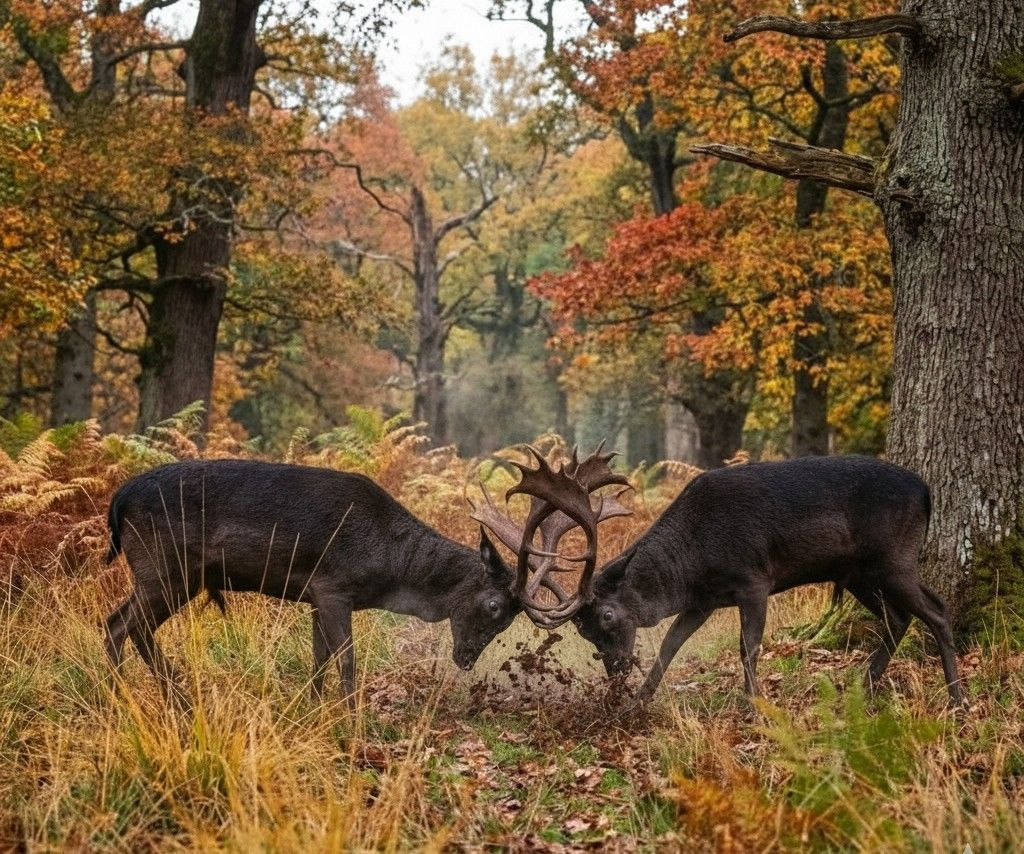
For nature enthusiasts hoping to witness this extraordinary seasonal event, dawn and dusk offer the best opportunities. The cooler air carries sound further, and stags are most active during these liminal hours. Richmond Park, the Scottish Highlands, Bradgate Park in Leicestershire, and numerous National Trust properties offer accessible viewing. Remember to maintain distance, use binoculars, and never approach rutting deer, as stags can be genuinely dangerous when testosterone-fueled and focused on competition.
The autumn bellow connects us to Britain's deep past, when these sounds would have accompanied our ancestors through the changing seasons. In supporting rewilding initiatives and thoughtful deer management, we ensure that future generations can experience this visceral reminder that we share these islands with wild things, following rhythms far older than human civilisation. That roar echoing across a misty valley isn't just a deer calling, it's the voice of wilderness itself, speaking to us still.
Start your rewilding journey today - become a member of LettsSafari .
When the Sycamore Gap tree was felled in 2023, it felt like the kind of moment the whole country gasped at once. You didn’t need to be a tree expert, a history buff or a rewilding enthusiast to feel it. The tree was one of those rare natural landmarks that somehow became part of everyone’s mental map of Britain. We’d all seen the photos. Many had visited it. And when it disappeared overnight, it was as if a small, familiar piece of our shared landscape suddenly dropped out of view.
But in classic nature fashion, quietly stubborn, endlessly surprising, the story didn’t end with loss. Thanks to quick-thinking conservationists, seeds and cuttings were saved, nurtured, grown…and now 49 young saplings have been planted across the UK , each carrying a little of the original tree’s magic forward.
And that’s where this story becomes bigger than one tree.
It becomes a lesson in resilience, community and the power of small, local action - the very principles at the heart of LettsSafari.

The felling sparked outrage and sadness across the UK. But the follow-up has been something quite the opposite: communal, hopeful, even tender. The new saplings are being planted in meaningful places, community greens, memorial gardens, hospital grounds, turning grief into growth.
Each planting is essentially a collective promise: We will rebuild what was lost. We will care for the nature we still have. We will pass something living and hopeful on to the next generation.
It’s grassroots conservation at its very best.
The Sycamore Gap story has become a national reminder that:
And crucially: rewilding doesn’t need to be a grand, sprawling national project. It can start on a windowsill.
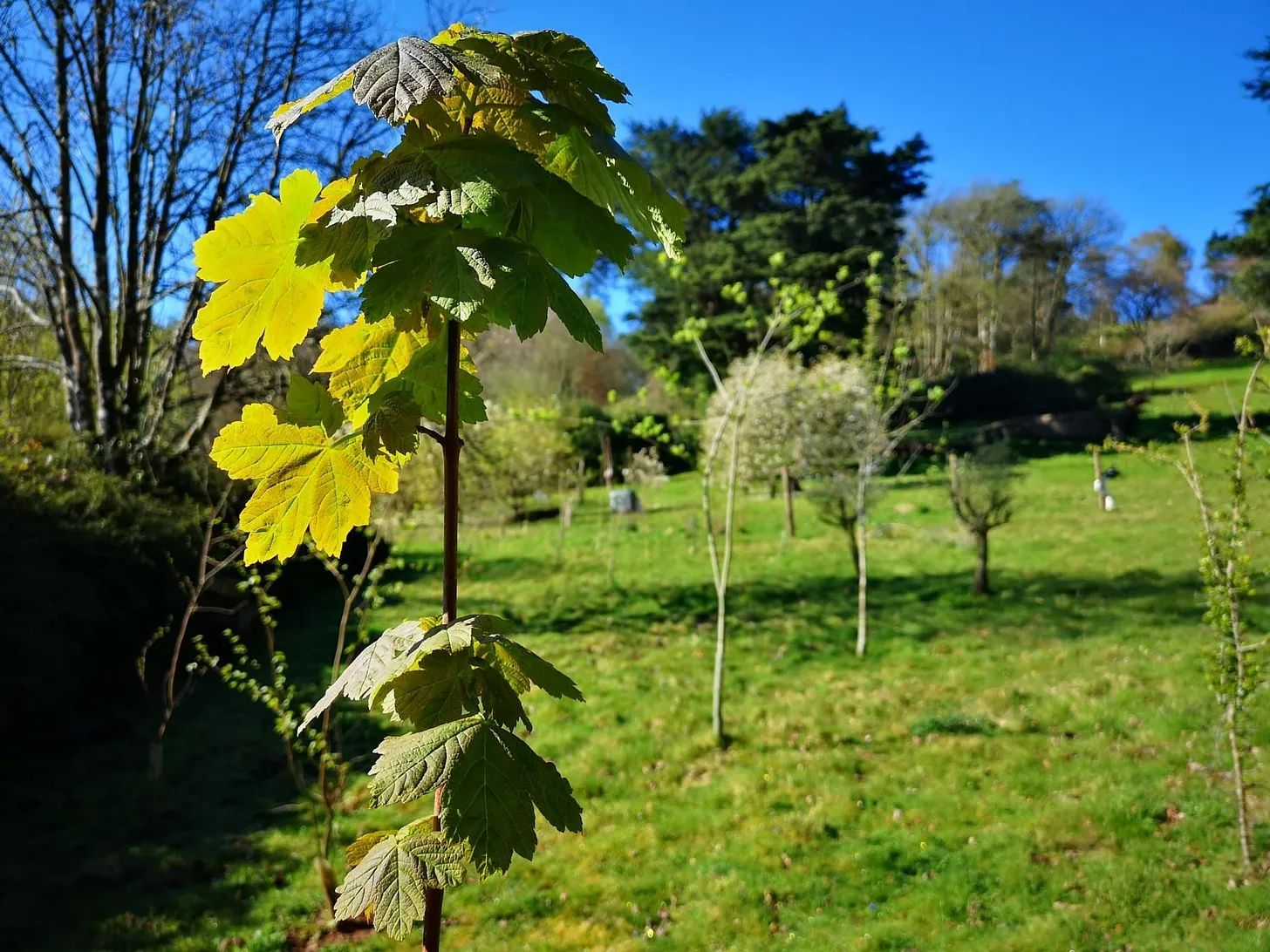
The Sycamore Gap rebirth mirrors exactly what we stand for at LettsSafari: s mall patches making a big difference.
Most of us don’t live beside iconic landscape features. We’re helping you with gardens, balconies, shared courtyards, local parks - tiny pockets of potential. And that’s the beauty of it.
LettsSafari helps people rewild those spaces through simple, guided, achievable steps:
Your donations fund our own rewilding work. And in return we show you how to turn whatever outdoor space you have into a thriving mini-habitat - whether that’s a garden corner, balcony pot, verge, or communal patch.
Just as the Sycamore saplings have become “trees of hope,” you can create your own symbolic planting - a native tree, a pollinator strip, a mini-pond. Something that says, “This is my contribution.”
Our subscription delivers clear actions, seasonal tips and small nature-positive rituals that build impact over time. Because rewilding isn’t a weekend project - it’s a journey.
We encourage you to involve neighbours, friends or local groups. Rewilding spreads exactly the way those saplings did: one place at a time, one person at a time.
Inspired by the Sycamore Gap saplings? Here’s where to start:
Rewilding isn’t abstract. It’s hands in soil. It’s noticing new bird visitors. It’s watching a plant establish itself. It’s giving nature room and time to surprise you.
The fall of the Sycamore Gap tree was a moment of national sadness - but the growth of its saplings has become a symbol of renewal. It reminds us that nature’s future is not fixed; it’s shaped by what we choose to do next.
At LettsSafari, we’re here to help you be part of that next chapter. One garden, one balcony, one tiny patch of hope at a time.
Let’s restore what we’ve lost. Let’s rewild what we can. Let’s plant our own saplings of hope.
****************************************
Subscribe to LettsSafari
Support our rewilding parks, get exclusive content of our projects and even receive expert tips to transform your garden, community, public or work spaces into a wildlife haven.
🌱 For every 10 new subscribers we plant a tree a year.
🦔 For every 100, we release an endangered animal.
🌳 And for every 10,000 we create a new rewilding safari park a year!
Make A Difference: Together We Can Rewild To Restore Nature.
Sign up TODAY
!
As Black Friday deals flood our inboxes and Christmas shopping lists grow longer, there's a gift that stands apart from the usual clutter: a LettsSafari membership . For just £4.50 a month - less than your morning coffee - you can give someone a front-row seat to genuine nature restoration while helping create wilder spaces across Britain.
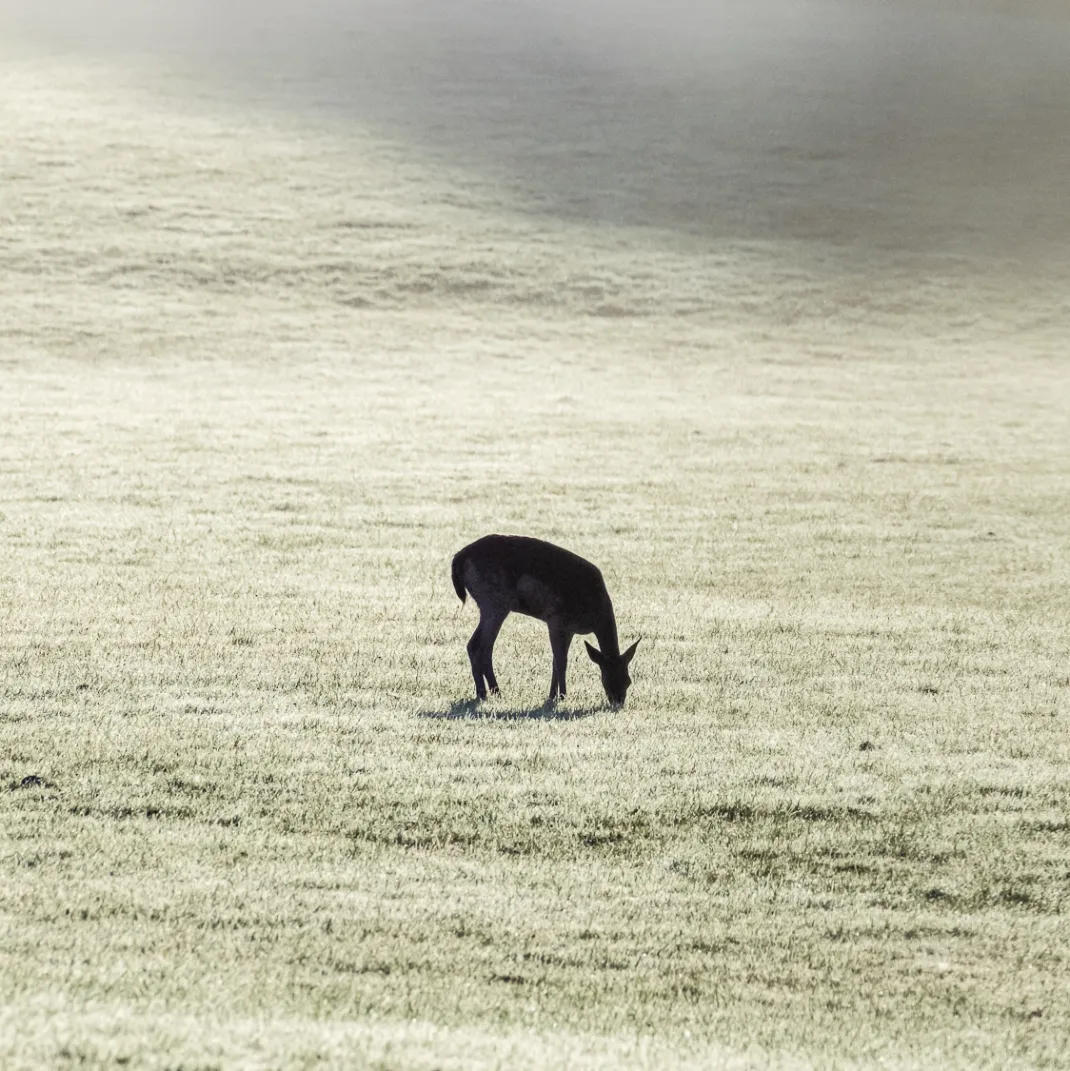
Unlike material gifts that gather dust, a LettsSafari subscription channels funds directly toward planting trees, introducing wildlife, and building new rewilding safari parks. The impact is tangible and beautifully simple: every 10 subscribers LettsSafari plants a tree annually, every 100 subscribers helps release an endangered animal, and every 10,000 subscribers they create an entirely new smaller-scale rewilding safari park. Each tree planted removes one tonne of carbon dioxide during its lifetime, making this gift a genuine contribution to healing our planet from the pioneers in smaller-scale rewilding.
What makes LettsSafari membership truly special as a holiday gift is its dual nature. Members receive twice-weekly updates featuring immersive video, wildlife photography, and compelling stories that transport them to these rewilding parks, that started in southwest England and are now expanding. It's like giving someone a subscription to hope itself, delivered every Tuesday and Friday to get them in the mood for the weekend.
But there's more. LettsSafari teaches members how to create mini wildlife havens in their own backyards, workplaces, schools, and communities. This means your gift multiplies its impact, inspiring the recipient to become an active participant in rewilding rather than a passive observer. They'll learn wildlife gardening, discover smaller-scale rewilding techniques, and join a thriving community of people committed to biodiversity. Full members even get LettsSafari's defintive guide to smaller-scale rewilding.
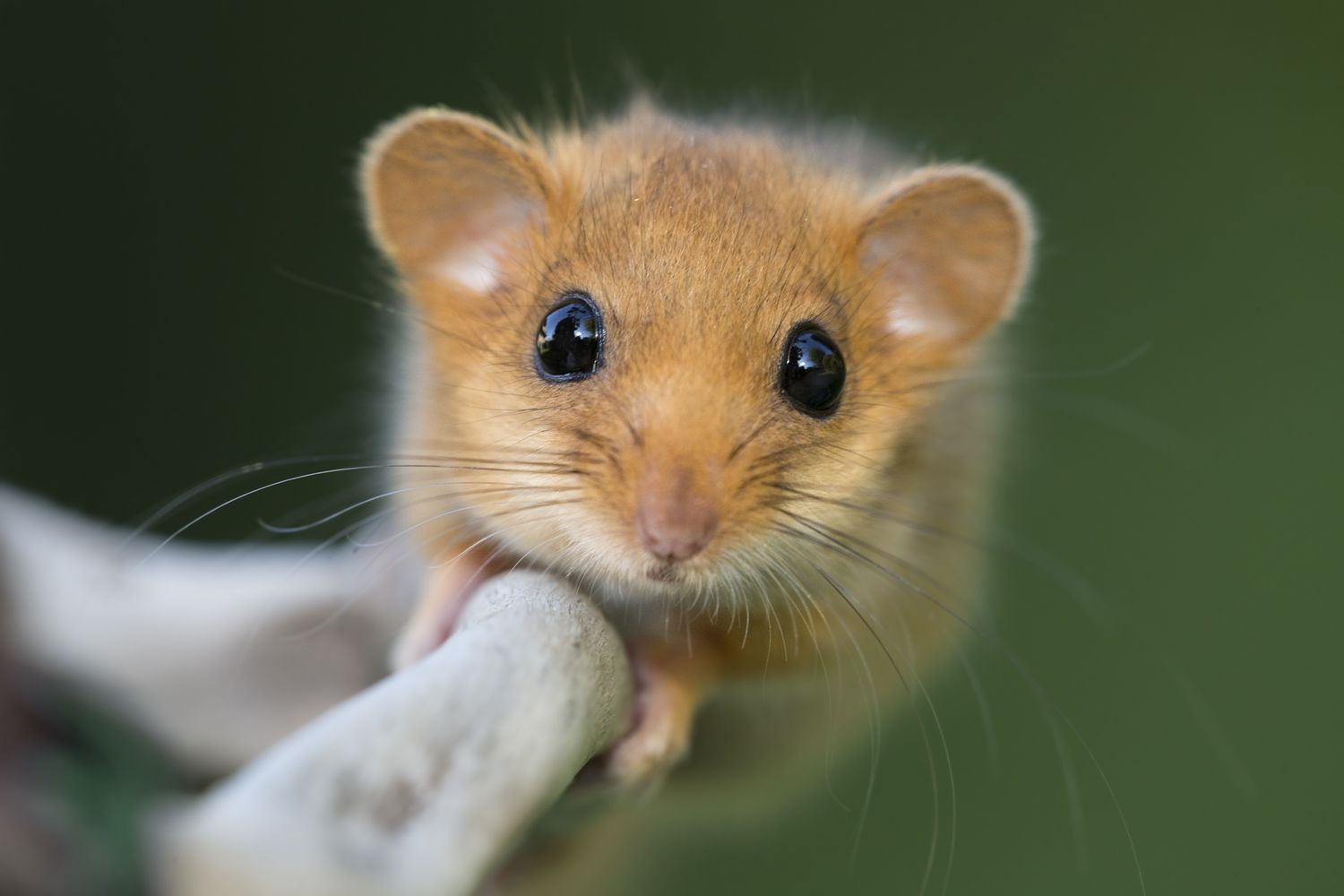
As we approach 2026, many of us are searching for meaningful ways to make a difference. We want wilder spaces, freer wildlife, and a nature-friendly future for the next generation. LettsSafari has figured out how to make smaller-scale rewilding accessible to everyone through collective action, proving that together we can repair damaged soil and waterways, restore habitats, and reverse wildlife decline.
This holiday season, skip the disposable gadgets and forgotten gift cards. Give the gift of genuine environmental action - a LettsSafari membership that helps build the wilder, freer, nature-friendly 2026 we all want to see. It's affordable, impactful, and inspires positive change long after the festive decorations come down.
Become a member of LettsSafari . Start your rewilding journey today.
The news that European wildcats could return to England for the first time in 100 years has captured national attention. A major feasibility study has found that reintroducing wildcats to south-west England, specifically mid-Devon, is realistic, supported by local communities and ecologically sound.
This development is more than a wildlife story. It’s a blueprint for rewilding, habitat restoration and community-led conservation. All themes central to our mission at LettsSafari.
A two-year study led by the South West Wildcat Project (involving Devon Wildlife Trust, Forestry England and Derek Gow Consultancy) concluded that releasing 40–50 wildcats into Devon from 2027 onwards is feasible.
Key findings include:
This study marks the most credible wildcat-return plan England has seen in a century.

The potential return of the wildcat is a powerful reminder of what rewilding can achieve, when habitat, science and people align.
The study highlights how connected landscapes (woodland joined to grassland and scrub) create resilience. This mirrors what we promote at LettsSafari: Even small rewilded spaces (gardens, parks, balconies) become powerful when connected.
The wildcat project shows that local buy-in is essential. People don’t just tolerate rewilding - they champion it when they understand the benefits.
Rewilding is more than releasing animals. It requires:
Smaller-scale rewilding at home works the same way: success comes from ongoing care, not one-off planting.
The wildcat’s story proves that lost species and habitats can recover with the right plan.
This message lies at the heart of LettsSafari’s mission: Restoration begins one small space at a time.

While the study is positive, these challenges must be managed:
None of these are insurmountable, but they require consistency, investment and patience.
The next steps likely include:
If successful, wildcats could be seen in England’s countryside again by 2027.
At LettsSafari, we focus on rewilding smaller spaces - from parks to gardens to balconies - because these micro-habitats support wider ecological recovery.
The wildcat story reinforces several truths we work with every day:
When you subscribe to LettsSafari, you support real-world restoration, from wildflower regeneration to pollinator habitats—helping rebuild ecosystems, one patch at a time.
The possible return of wildcats to England shows what happens when nature is given space, and when communities choose restoration over decline.
For us at LettsSafari, it’s a reminder that every patch of land matters, from the largest woodland to the smallest balcony box. Rewilding is not a grand gesture - it’s a movement built from many small, hopeful acts.
****************************************
Subscribe to LettsSafari
Support our rewilding parks, get exclusive content of our projects and even receive expert tips to transform your garden, community, public or work spaces into a wildlife haven.
🌱 For every 10 new subscribers we plant a tree a year.
🦔 For every 100, we release an endangered animal.
🌳 And for every 10,000 we create a new rewilding safari park a year!
Make A Difference: Together We Can Rewild To Restore Nature. Sign up TODAY!
****************************************
No. Wildcats avoid people and pose no risk to humans or livestock. They mainly hunt small mammals.
Centuries of persecution and habitat loss caused their decline and eventual disappearance.
The feasibility study found that south-west England, particularly mid-Devon, provides the right woodland and scrub habitat.
If approved, releases could begin in 2027.
The principles are the same: healthy habitats, native species, and people actively involved in restoration.
Over the last week, a story from the Scottish Highlands has captured the imagination of conservationists, nature-lovers and frankly anyone who thinks Britain could do with a little more magic. Trees for Life has announced a bold £3.6 million “Missing Species” rewilding programme, aiming to restore four keystone animals to selected parts of the Highlands: the lynx, the beaver, the red squirrel and a modern descendant of the aurochs, the great wild grazer that once shaped European landscapes.
It’s big. It’s ambitious. And it tells us something important: The UK is finally rediscovering how to let nature lead.
But here’s the twist that matters for every LettsSafari supporter - you don’t need to own a Highland estate to join the rewilding movement. In fact, your balcony or back garden is the frontline.
Let’s break down what this story means, and where you fit in.
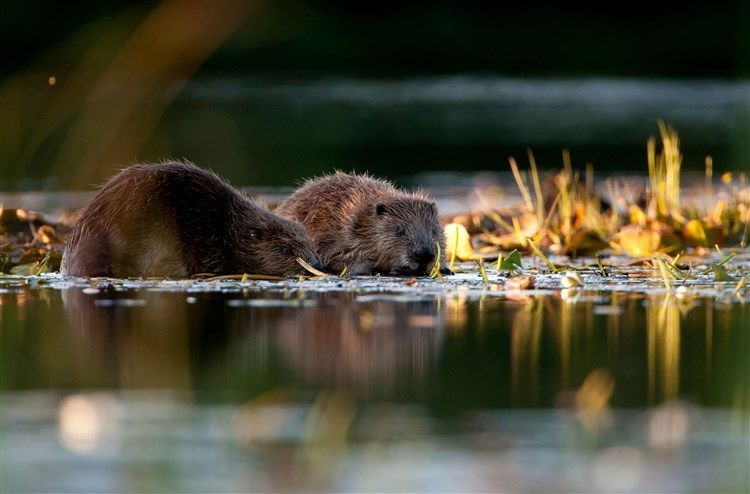
This programme isn’t about scattering charismatic animals on hillsides and hoping for the best. These four species do real ecological work:
In other words, they re-start natural processes. And once nature’s processes restart, biodiversity follows.
At LettsSafari, this principle is exactly what we champion on a smaller scale: Give nature the right ingredients, and a little space, and it begins to repair itself.
The Highlands initiative isn’t just about ecosystems; it’s about communities too. The programme highlights local economic benefits, eco-tourism, water management improvements and climate resilience. When nature recovers, everyone wins - not just the wildlife.
And that’s where home-scale rewilding fits beautifully. Your garden, balcony or shared green space can support pollinators, restore soil life, cool your local environment and give native species a refuge. Small spaces add up. Always have. Always will.
Projects like this Highland reintroduction remind us that rewilding is thoughtful, guided and intentional. It’s not about abandoning land - it’s about designing for nature and then stepping back.
That’s exactly where LettsSafari comes in.
Whether you have a balcony, a courtyard, or a sprawling suburban garden, we help you:
Apply big-ecosystem principles at home
From creating miniature wetlands to building micro-habitats, our monthly rewilding subscription guides you step by step.
Understand what nature actually needs
We turn complex ecological ideas, like keystone species, trophic cascades and habitat layering, into simple, joyful actions.
See and measure impact
Through seasonal prompts, wildlife spotting tips and soil-health suggestions, you begin witnessing real change right where you live.
Join a growing movement
Just as Scotland’s project relies on community engagement, LettsSafari brings together thousands of people restoring nature one patch at a time.
You’re not just gardening. You’re participating in the most hopeful environmental shift happening in the UK today.
Maybe you’re not about to reintroduce a lynx to your garden (your local postman may thank you). But you can invite back bees, beetles, birds, fungi, frogs, hedgehogs and soil life. All of which desperately need more space.
So if the Highlands are gearing up for a wildlife renaissance, why not let your own wild corner be part of the story?
👉 Join LettsSafari today and start your journey from “nice garden” to “mini-rewilded ecosystem.”
****************************************
Subscribe to LettsSafari
Support our rewilding parks, get exclusive content of our projects and even receive expert tips to transform your garden, community, public or work spaces into a wildlife haven.
🌱 For every 10 new subscribers we plant a tree a year.
🦔 For every 100, we release an endangered animal.
🌳 And for every 10,000 we create a new rewilding safari park a year!
Make A Difference: Together We Can Rewild To Restore Nature.
Sign up TODAY
!
Last week the University of St Andrews announced that its “Nature Networks” project won the 2025 UK & Ireland Green Gown Award in the Nature Positive category. The project restored and connected habitats along 16 km of Fife’s coastline, covering woodland, hedgerows, meadow, wetlands and saline lagoon restoration.
This story offers three key themes that matter to us at LettsSafari, and that your garden or balcony can reflect:
– The project established 4.78 ha of native woodland, 2,413 m of native hedgerow and 6,610 m² of meadow.
– It also restored a saline lagoon and brought neglected SSSI (site of special scientific interest) land under conservation grazing.
LettsSafari Take-away: Even small green spaces (your balcony, garden border, or communal park) can serve as stepping stones for wildlife - a tiny meadow patch, a native shrub hedge or a water feature can create mini-corridors. LettsSafari’s subscription support offers step-by-step rewilding tips so you can build habitat networks in your space, not just isolated patches.
– 408 people engaged in 38 practical volunteering/training sessions across students, staff and local residents.
– The project isn’t just about wild nature in a vacuum; it’s about community, wellbeing, education and climate adaptation.
LettsSafari Take-away: Your garden isn’t just a showpiece - it can be a classroom, a micro-rewilding lab, a personal resilience zone. LettsSafari helps you transform your space into a nature-hub where you, your friends or your family become part of the restoration story.
– The scale of the project is landscape-level: 16 km coastline, multiple habitat types.
– Yet the principle is scalable down to backyards, balconies, parks.
LettsSafari Take-away: If a university can restore woodland, meadows and lagoons at scale, you can restore a corner of green, a wild patch, a naturalised flower-border. LettsSafari’s subscription model gives you hints and tips, seasonal planting advice and monitoring checklists to turn your space into a micro-rewilding project.
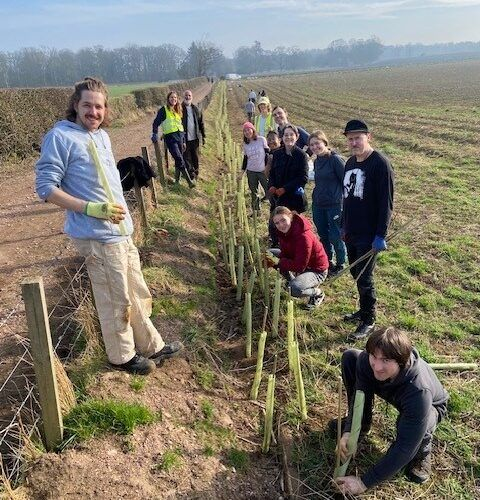
At LettsSafari, we believe nature restoration isn’t just for national parks or estates - it starts with home, garden, balcony and community patches. Here’s how we support you:
Practical guidance : Our rewild-at-home modules show how to pick native plants, create mini-wetlands or wildflower corners, install simple structures (logs, deadwood, stone piles).
Monitoring & impact : We help you track changes - biodiversity counts (bees, birds, insects), wildlife sightings, vegetation growth. This mirrors how big-scale projects measure success.
Subscription model : Regular tips, content, seasonal advice mean your space evolves over time, aligning with the long-term nature restoration story.
Climate + nature synergy : Restoring your space helps with flood mitigation (rain gardens), carbon capture (native shrubs/trees), and biodiversity - all features celebrated by larger projects like the one at St Andrews.
Your space matters. A garden or balcony that’s turned wild contributes to nature recovery, climate resilience and personal wellbeing. The St Andrews project reminds us: habitat restoration isn’t distant or abstract - it’s local, tangible and powered by people. By subscribing to LettsSafari, you’re joining the wave of change. Your flower-bed becomes part of the national mosaic of rewilding.
St Andrews is more than an award-winner - it’s a blueprint for nature restoration that starts at the scale of any green space. At LettsSafari, we equip you to turn your garden or balcony into a vital node in the wider network of wild-spaces. Because restoring nature? It begins right outside your door.
****************************************
Subscribe to LettsSafari
Support our rewilding parks, get exclusive content of our projects and even receive expert tips to transform your garden, community, public or work spaces into a wildlife haven.
🌱 For every 10 new subscribers we plant a tree a year.
🦔 For every 100, we release an endangered animal.
🌳 And for every 10,000 we create a new rewilding safari park a year!
Make A Difference: Together We Can Rewild To Restore Nature.
Sign up TODAY
!
****************************************
Rewilding rebuilds nature’s natural defences. Projects like St Andrews’ coastal restoration capture carbon through new woodland and wetlands, reduce flood risk by storing rainwater, and boost biodiversity that keeps ecosystems resilient. Your own garden can do the same - small native plants and wild corners act as mini carbon sinks .
Yes! Every patch matters. Even a balcony or window box filled with native flowers creates food and shelter for pollinators. When thousands of small spaces link up, they form micro-wildlife corridors that reconnect fragmented habitats. That’s exactly the LettsSafari vision: local actions, national impact.
Begin by stepping back. Let part of your garden grow wild, skip a mow, or leave fallen leaves as shelter. Then, add a few native species and a shallow water dish or log pile. LettsSafari subscribers get seasonal tips and rewilding checklists to guide every stage - from tiny tweaks to full-blown mini-habitats.
Crunch. That unmistakable sound of autumn underfoot, the crisp crumble of fallen leaves, signals the turning of the seasons. To many, leaf piles are simply yard waste waiting for the compost bin. But to the natural world, they’re something far more extraordinary: a micro-wilderness teeming with life, transformation, and quiet magic.
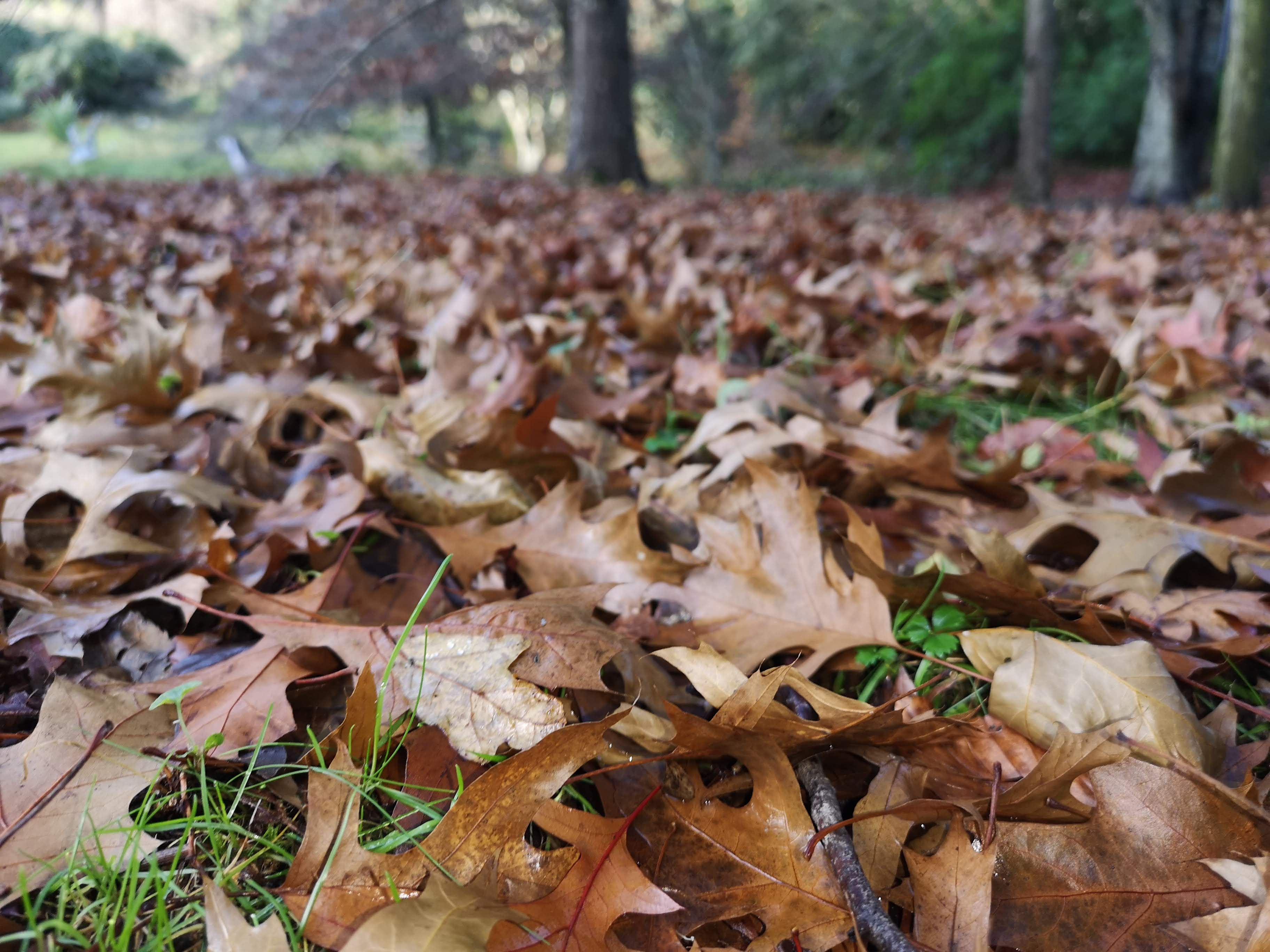
Crouch down beside that heap of fallen leaves in your garden corner. Listen carefully. Beneath the rustle of oak and maple, there's an entire civilisation humming with life. A micro-wilderness as complex and vibrant as any jungle, just at a scale that fits in your backyard. It’s humid and earthy down there, a miniature rainforest tucked beneath the bare branches above. The air smells of moss and decay - life’s grand recycling system at work.
That pile of crinkled amber and burnt sienna isn't garden waste. It's a five-star hotel, restaurant, and maternity ward rolled into one, bustling with more residents than you'd find on a busy city street.
Peel back the top layer of your leaf pile and you'll discover a gradient of decomposition, each level hosting its own community. The crispy surface crackles underfoot, but just beneath lies a darker, damper world where leaves soften into a moist blanket. Here, the temperature rises a few precious degrees, enough to make all the difference on a frosty November morning.
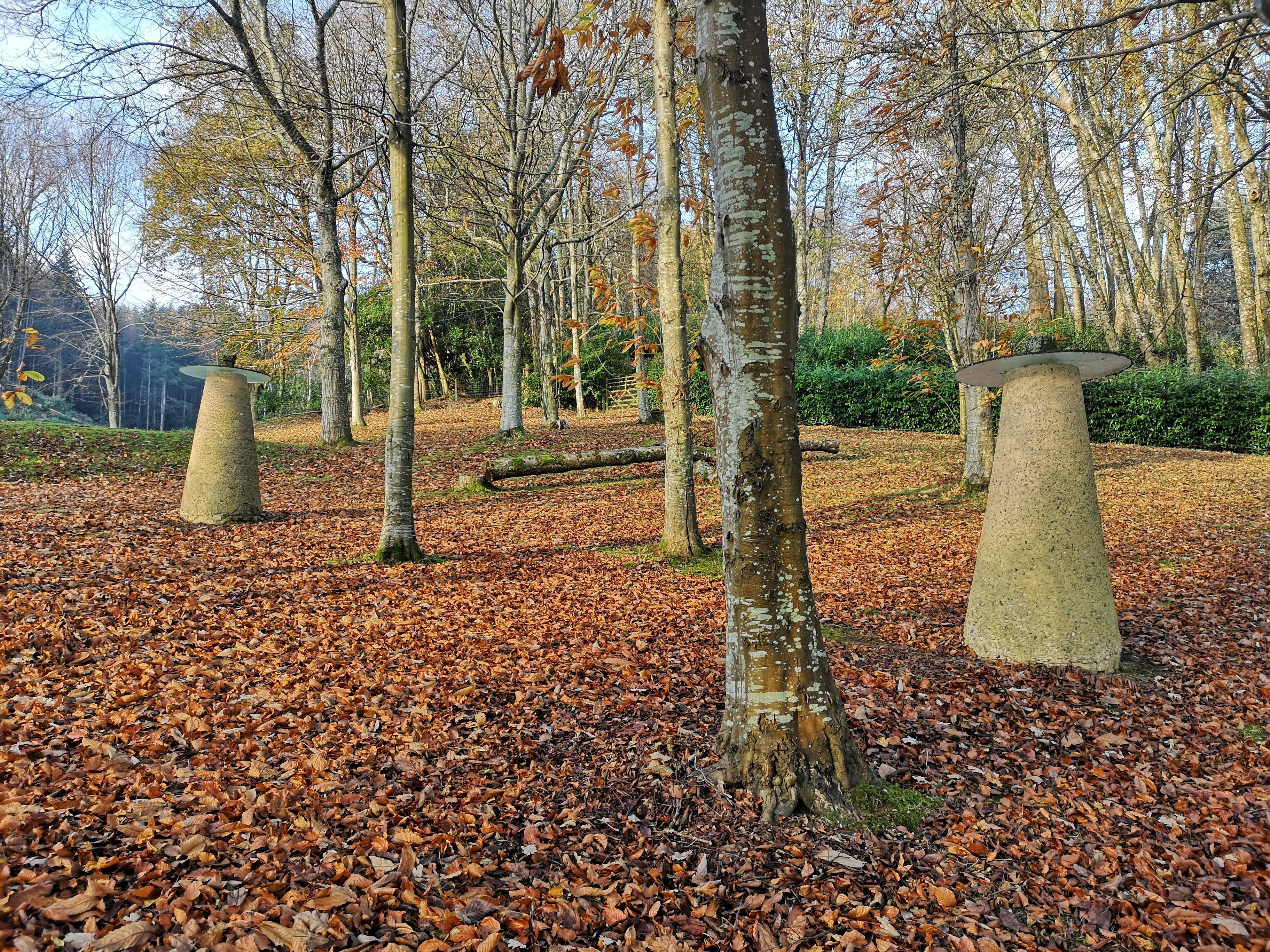
Lift a leaf and you might spot a centipede darting away, its sinuous body moving like a living ribbon, or a millipede calmly munching through soft detritus, digesting what trees no longer need. These creatures, invisible to the casual passerby, are the engineers of the soil, the unseen workforce that keeps our ecosystems alive.
Ground beetles scuttle through the labyrinth of veins and stems, their metallic backs catching fragments of filtered light. Shiny and black, the beetles patrol like miniature panthers, hunting for unsuspecting prey: worms, slugs, or the occasional ant that’s wandered too far from its nest. Millipedes curl into defensive spirals when disturbed, their countless legs a marvel of natural engineering. Springtails, those tiny, primitive insects most people never notice, leap through the leaf litter like microscopic kangaroos, consuming fungal spores and decomposing matter.
The woodlice patrol their territories, those armoured minibeasts that roll into perfect spheres when threatened. They shuffle slowly, clad in their segmented armour, turning dry leaves into nutrient-rich crumbs. Despite their name, they're actually crustaceans that evolved to live on land, carrying their aquatic ancestry in their need for moisture. Your leaf pile provides exactly that: a damp refuge in an otherwise dry terrestrial world.
And as temperatures drop, the leaf pile becomes a refuge. Frogs burrow into its damp warmth, toads tuck themselves deep within, and hedgehogs. Those beloved icons of the British garden often choose leaf piles as their winter sanctuary. Even overwintering butterflies, like the peacock and small tortoiseshell, may shelter here, wings folded in sleep until the first blush of spring.
As autumn deepens into winter, the real magic begins. Fungi thread their invisible networks through the leaves, breaking down tough cellulose into nutrients the soil can absorb. These fungal highways connect trees across your garden, facilitating an underground internet of resource sharing that scientists are only beginning to understand.
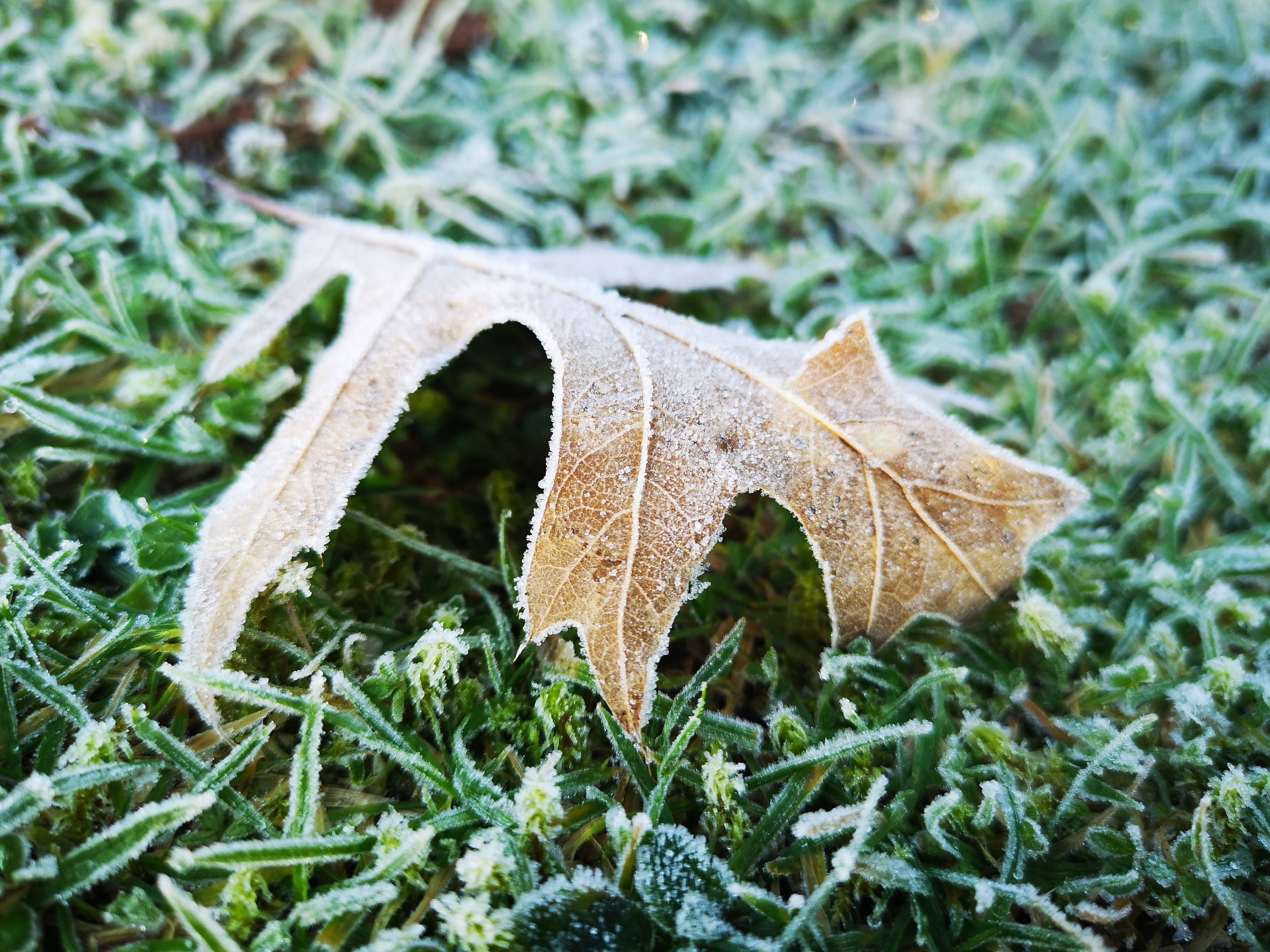
The magic of a leaf pile isn’t just in the creatures it shelters; it’s in the transformation it sparks. As autumn’s castoffs break down, they release a slow, steady trickle of nutrients into the soil. Leaf litter feeds fungi, which in turn feeds plants. It enriches earthworms and microbes that aerate and renew the soil, creating a living cycle of decay and rebirth. Over weeks and months, the crisp reds and golds of autumn melt into a soft, dark mulch, - nature’s own compost, fuel for the next season’s growth.
Earthworms emerge from below, pulling leaves down into their burrows, churning and mixing organic matter with mineral soil. A single earthworm can process its own weight in soil every day, and your leaf pile is an all-you-can-eat buffet. What they leave behind, called worm castings, is black gold: nutrient-rich fertiliser that makes plants thrive without any synthetic supplements.
The chemical transformation happening in your leaf pile is quietly miraculous. Tough winter leaves, packed with carbon, gradually break down into humus-rich mulch that improves soil structure, retains moisture, and feeds billions of soil microorganisms. This isn't waste management - t's soil creation, the same process that built the fertile ground beneath ancient forests.
And the best part? It’s effortless. Simply by leaving leaves where they fall, or raking them into a quiet corner, you’re creating habitat, food, and shelter. You’re helping the soil breathe, holding moisture in the ground, and giving insects a home through the cold months. In short, you’re rewilding - one leaf pile at a time.
Word spreads quickly in the animal kingdom about a good foraging spot. Robins and blackbirds become regular visitors, flicking leaves aside with sharp flicks of their beaks, snatching up beetles and larvae. Hedgehogs shuffle through at dusk, their snuffling audible as they hoover up slugs and snails. Shrews, those hyperactive bundles of fur with metabolisms that never rest, hunt through the layers for invertebrate prey.
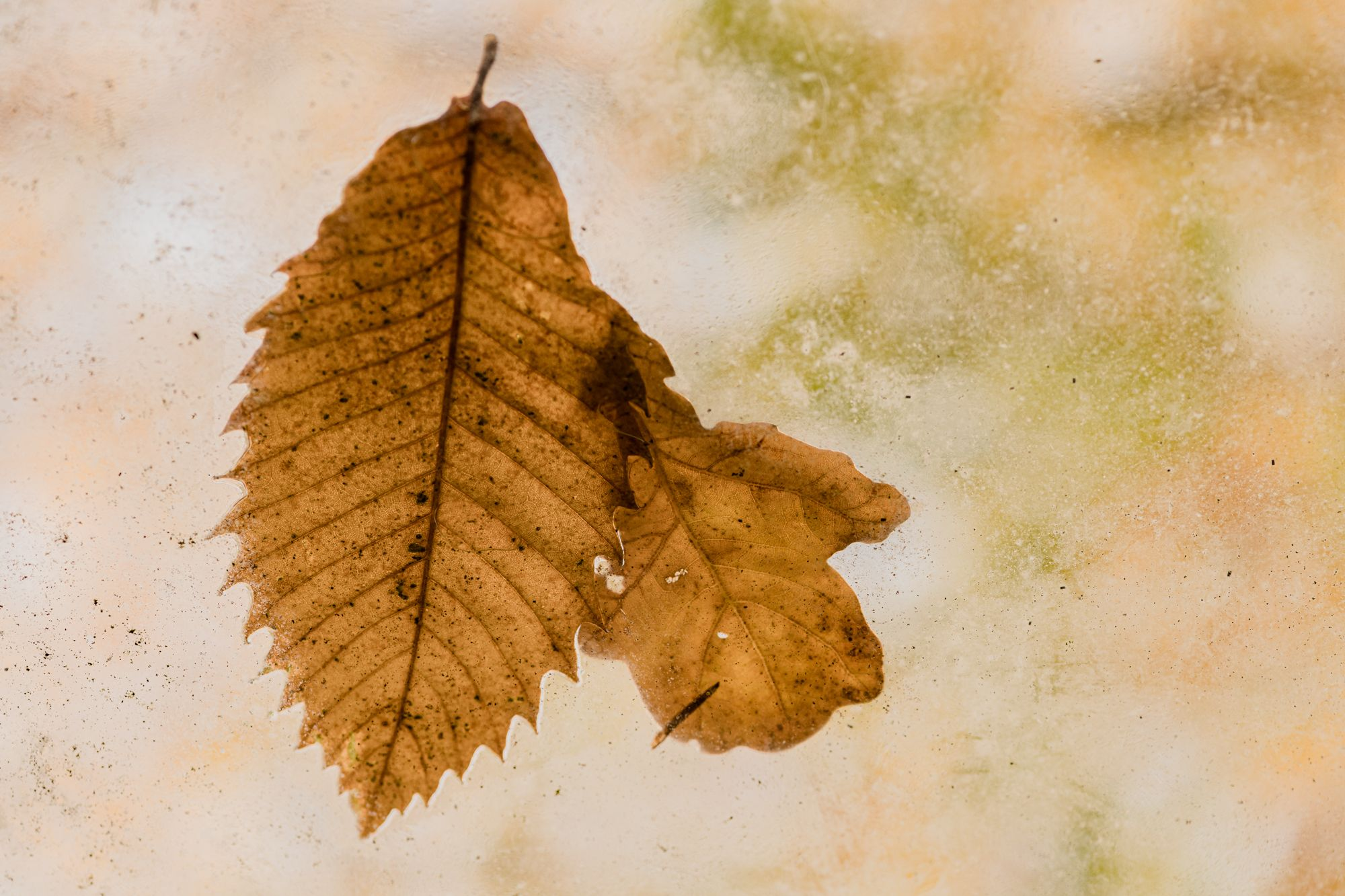
Even foxes and badgers occasionally investigate leaf piles, though they're usually after the small mammals sheltering beneath. Mice and voles tunnel through the insulating layers, creating cosy nests safe from winter's bite and predators' eyes. Toads and newts seek shelter here too, waiting out the cold months in a state of semi-dormancy.
Your leaf pile becomes a hub in the local food web, connecting decomposers to predators, plants to pollinators, soil to sky.
This is exactly what LettsSafari is all about - recognising that rewilding doesn't require vast estates or complicated schemes. Sometimes the most powerful conservation action is simply doing less: leaving those leaves, creating brush piles, letting corners go wild. Our network of smaller-scale safari parks, gardens, and backyards shows how even tiny wild spaces, whether it’s a meadow strip, a pond, or yes, a humble leaf pile, can become sanctuaries for wildlife and people alike.
Our approach is playful, practical, and deeply hopeful: restoring nature while reminding us how joyful it can be to reconnect with it.
Small-scale rewilding works because nature is fractal. The same core principles governing a thousand-acre reserve apply to your garden corner. Create habitat, provide food, allow natural processes to unfold, and wildlife will respond.
We believe everyone can be a rewilding ranger, starting with simple choices like keeping leaf piles. These micro-wildernesses prove that restoration is accessible, practical, and frankly, irresistible once you've witnessed the secret world beneath those autumn leaves. So this year, put down the rake and pick up your curiosity instead. Your garden's wildest residents are waiting.
So, as autumn deepens and the temptation to tidy up grows strong, pause before you sweep those leaves away. Instead, step closer. Listen to the whisper of the wind through the dry, papery canopy. Breathe in the musk of moss and soil. Imagine the bustling life beneath your feet—the beetles, worms, and fungi turning decay into life, the hedgehog dreaming in its leafy burrow.
In that small, scruffy corner of your garden lies a universe in miniature: a micro-wilderness, alive and humming, doing nature’s quiet work. Leave it be, and you’ll be joining a growing movement of people and creatures, helping to heal the planet, one leaf pile at a time.
Start your rewilding journey today - become a member of LettsSafari .
A striking new experiment in Finland invites us to rethink what it means to “play in the dirt”. In a study of young children at nurseries such as Natural Resources Institute Finland, entire sections of forest floor, rich in soil, mosses, leaf-litter and wild undergrowth, were installed in playgrounds. Within just weeks, children’s immune profiles shifted, their skin and gut micro-biomes diversified, and the idea that playing in nature is a “nice to have” became something more urgent: a public-health intervention.
At LettsSafari, our mission has always been to help gardens, balconies and small parks become mini-rewilded spaces. What this Finnish study shows is that nature isn’t just aesthetic - it’s foundational for health, relationships and ecosystem resilience. Let’s unpack what’s going on, what it means for our green-spaces (even at the scale of a balcony) and how LettsSafari is ready to help you translate the findings into action.
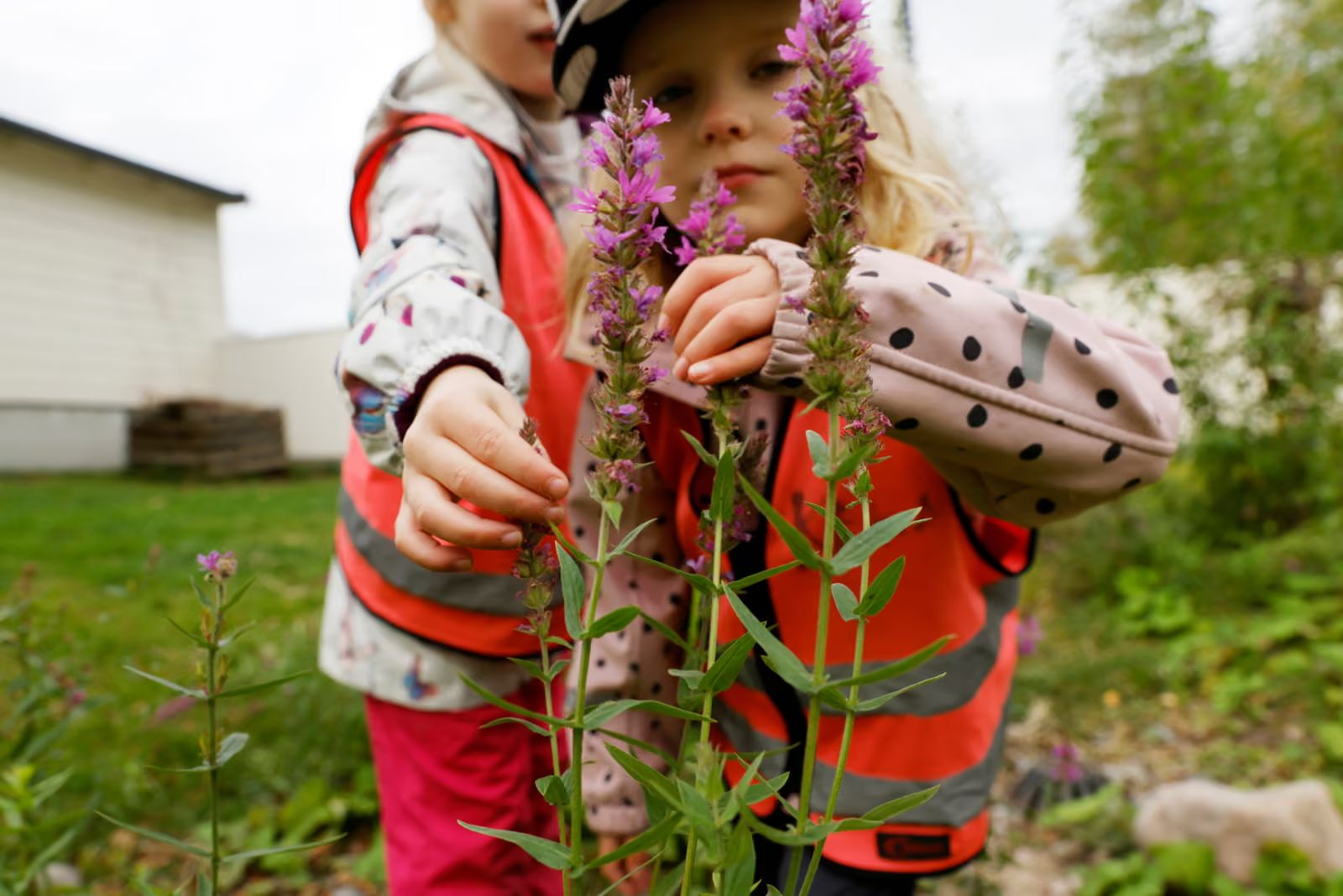
The research highlights two “layers” of biodiversity: the outer (soil, plants, fungi, environmental microbes) and the inner (our skin, gut, airways microbiota). The Finnish nurseries increased the outer layer, forest-floor soil, plants, mosses, and this changed the inner. The children playing in the enriched yards acquired more diverse skin and gut bacteria and greater immune regulatory markers.
Within as little as 28 days, children in the intervention group showed higher levels of regulatory T-cells and other immune markers associated with reduced inflammation and fewer immune-mediated illnesses.
Compare a standard urban play‐area (asphalt, gravel, rubber mats) with one transformed into a living substrate of forest soil and vegetation: the microbial richness exploded. The “rewilded” yards had many more microbes and plant species, giving children the chance to touch, explore, dig, forage, even get muddy, and thereby absorb nature’s microbial network.
The study reinforces the so-called “biodiversity hypothesis” which posits that reduced contact with diverse environmental microbes (in modern, urban, sterile settings) may be driving the rise of allergies, autoimmune disease and other immune-dysregulation ailments. It also shows us that healthy ecosystems (soil, plants, fungi, microbes) are intimately connected to human health - not as separate domains but as interwoven systems.
Even if you have just a balcony, a patio or a small garden, introducing richer substrates (leaf-litter, native plants, moss patches) can help re-connect the micro-ecosystem underfoot. The Finnish experiment used relatively modest interventions (forest-floor patches) and still saw measurable human benefit. That means your space counts.
We often talk about wildlife corridors, species restoration and carbon capture—but this study highlights that rewilding also supports human immune health. In your marketing for LettsSafari you can lean into this: it’s not just “make your garden nature-friendly”, it’s “boost your microbiome, enhance your wellbeing”.
Modern gardens often use clean gravel, manicured lawns, sterilised surfaces. The Finnish study shows the value of letting natural complexity in: soil, microbes, plants. At LettsSafari we encourage replacing sterile surfaces with living ones, planting native species, creating “mini-wild zones”.
Though the major immune shifts were seen in about a month, the value compounds over years. If children’s immune systems benefit from just weeks of enriched soil exposure, imagine what a decade of exposure could do. For gardens, the message is: start now; the ecosystem you build today supports future health, for humans and planet.
Rewilded gardens don’t only serve us - they serve the broader web of life: pollinators, soil fungi, insects, birds, micro-habitats. By shifting from conventional ornamental landscaping to micro-biodiverse zones, we build resilience in the face of climate change, biodiversity loss and ecological disconnection.
At LettsSafari we specialise in turning gardens, balconies and smaller urban spaces into thriving micro-ecosystems. Here’s how we align with, and build on, the Finnish findings:
Rewilding subscriptions & toolkits : Our subscription service guides members step-by-step through creating biodiverse substrates: how to incorporate native leaf-litter, moss patches, dead-wood zones, wild native plants. These are precisely the kinds of interventions that enrich microbial exposure.
Design templates for any scale : Whether it’s a window-box or a 200 m² park zone, our design templates account for creating “dirty zones” - areas where nature can do its work: soil-based play, wild plants, water infiltration zones.
Educational content with the story : We don’t just install landscapes; we empower people to understand why . We share stories, photography, quick reels and content that connects the dots between biodiversity and human health, so the end-user becomes a steward, not just a spectator.
Scaling urban ecosystem transitions : The Finnish experiment was a preschool yard. We scale that idea into every garden, balcony and park. By doing so, we help build a mosaic of nature‐rich spaces across urban zones, boosting the “micro-biodiversity fabric” of our cities.
The Finnish soil-play experiment is more than a fun sound-bite about “children getting muddy”. It is a profound illustration that when we bring more of nature into our lives, we bring more of ourselves - our health, our resilience, our connection. At LettsSafari, we’re committed to making that connection tangible, accessible and beautiful. Let’s get dirty together and grow something wild, healthy and enduring!
****************************************
Subscribe to LettsSafari
Support our rewilding parks, get exclusive content of our projects and even receive expert tips to transform your garden, community, public or work spaces into a wildlife haven.
🌱 For every 10 new subscribers we plant a tree a year.
🦔 For every 100, we release an endangered animal.
🌳 And for every 10,000 we create a new rewilding safari park a year!
Make A Difference: Together We Can Rewild To Restore Nature.
Sign up TODAY
!
****************************************
Absolutely. The Finnish nursery experiment proved that even small patches of living soil and native vegetation can boost immune health in just a few weeks. The same applies to our homes and cities - each balcony box or backyard wild patch becomes a micro-ecosystem that supports birds, insects, fungi and the invisible microbial life that helps keep us healthy. At LettsSafari, we call this smaller-scale rewilding - a movement that turns smaller spaces into powerful biodiversity hubs. Every patch counts.
Rewilding benefits both people and planet. The Finnish research found that when children played on forest-floor soil, their skin and gut bacteria became more diverse and their immune systems stronger. It shows that the health of our environment is directly linked to our own wellbeing. Touching real soil, breathing living air, and engaging with natural spaces stimulates our immune regulation and reduces inflammation. That’s why LettsSafari helps households reconnect with nature - creating smaller wild places that nurture both biodiversity and human health.
Start by replacing sterile materials - gravel, artificial turf, decking - with living soil and native plants. Leave fallen leaves and wood to decay naturally. Add moss, wildflowers, or a mini log pile to invite microbes, insects, and pollinators. Even a few planters or a wild corner can make a big difference. LettsSafari’s rewilding subscription provides monthly tips, seasonal guides, and easy design templates to help you transform any space (balcony, garden, or park) into a thriving mini-habitat.
The Derbyshire Wildlife Trust has launched a new rewilding project to restore Middleton Moor near Wirksworth, aiming to raise £1.2 million to purchase 135 acres of degraded land.
This land, currently over-grazed and poor in biodiversity, could become part of a 1,000-acre wildlife corridor , connecting five nearby nature reserves. It’s a once-in-a-generation opportunity to let nature recover across the Peak District landscape. “There’s very little life there right now – but with time and support, it could become a thriving habitat for birds, pollinators, and wildflowers,” said Danielle Brown from Derbyshire Wildlife Trust.
One of the biggest barriers to biodiversity recovery in the UK is fragmented habitats . When green spaces are isolated, species can’t move freely or adapt to climate change. Projects like the Derbyshire rewilding initiative show that connecting habitats – even small ones – can create powerful chains of biodiversity.
At LettsSafari, we apply the same principle to smaller spaces. Whether you have a garden, park, or balcony, rewilding works best when every patch connects to the next. Each small habitat adds to a national network for wildlife.
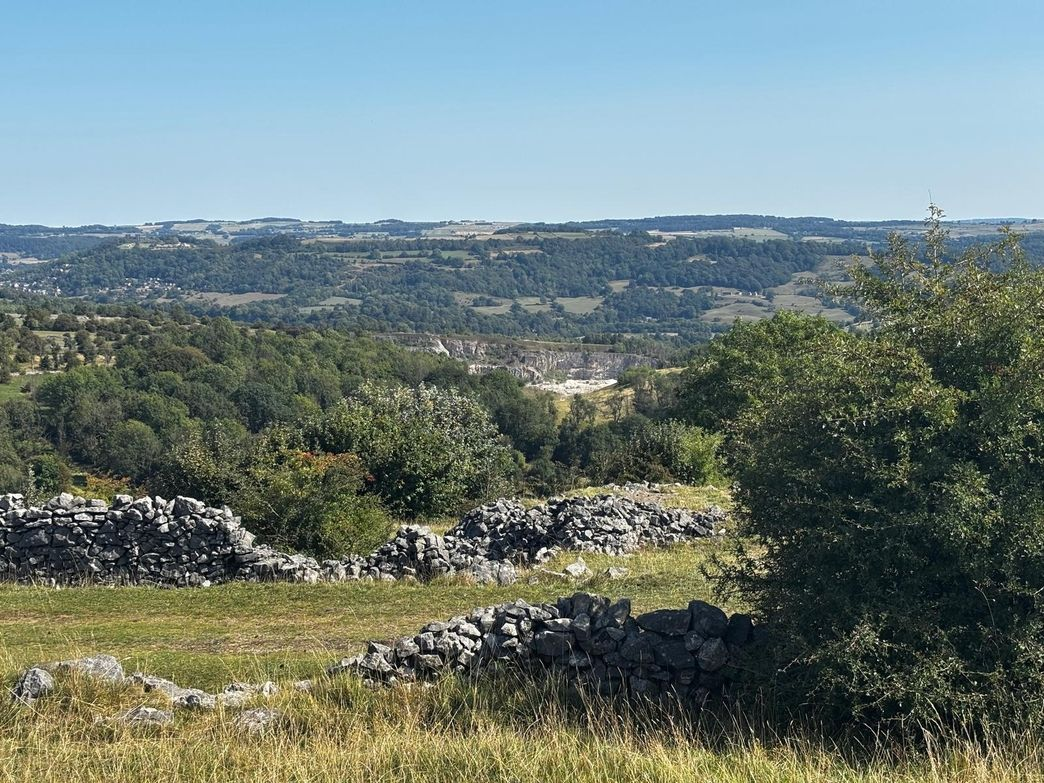
Rewilding isn’t only for large estates or nature reserves. It can start in a garden , community park , or school field . The Derbyshire land may begin as barren pasture, but given time and the right interventions – native planting, reduced grazing, pond creation – nature will quickly reclaim it.
At LettsSafari, we see this transformation daily across our smaller-scale rewilding sites. By restoring wetlands, planting native trees and letting grasslands grow, we prove that every piece of land has rewilding potential .
The Derbyshire project depends on public donations – and that’s part of a growing trend across the UK. People are no longer waiting for governments or corporations to act. Communities, individuals and small organisations are crowdfunding nature restoration .
This collective approach mirrors LettsSafari’s model: shared ownership of rewilding . By subscribing to LettsSafari, you contribute directly to nature restoration projects while receiving monthly rewilding tips for your own space.
Every subscriber helps fund biodiversity recovery on real land and learns how to rewild at home.
At LettsSafari , we make rewilding accessible for everyone, not just landowners or conservationists.
Rewild your garden or balcony with simple monthly guides.
Learn how to attract pollinators and boost local biodiversity.
Support real rewilding projects through your subscription.
Join a community of modern conservationists who share results and inspire action.
Our approach links personal action with wider restoration, proving that small spaces make a big difference when multiplied across communities.
The Derbyshire Wildlife Trust’s mission to restore Middleton Moor shows that restoration is possible – with people power, connection and commitment.
At LettsSafari, we take that same vision and make it local, tangible, and personal. Your garden, balcony, or park can become part of the UK’s growing wildlife network.
👉 Join LettsSafari today to support real nature restoration and receive monthly inspiration for rewilding at home: www.lettssafari.com
Rewilding means allowing natural processes to restore ecosystems - by planting native species, reducing human interference, and letting wildlife return.
Over 40% of UK species are in decline. Rewilding helps recover lost habitats, improves soil and water quality, and creates resilience against climate change.
Start small: plant wildflowers, leave a patch unmown, add water for pollinators and avoid chemicals. LettsSafari provides step-by-step guidance for every season.
LettsSafari combines expert-led rewilding projects with digital guidance for your own garden. By subscribing, you directly fund restoration while learning practical ways to boost biodiversity where you live.
Climate change has become one of the most politicised issues of our time. Opinions clash, policies divide and progress often stalls in debate. But one thing we can all agree on? Restoring nature is good - for the planet, for wildlife and for us.
Today is the International Day of Climate Action - a reminder that while the headlines may focus on politics and emissions, the heart of real climate action lies in something simpler and deeply human: bringing nature back to life.
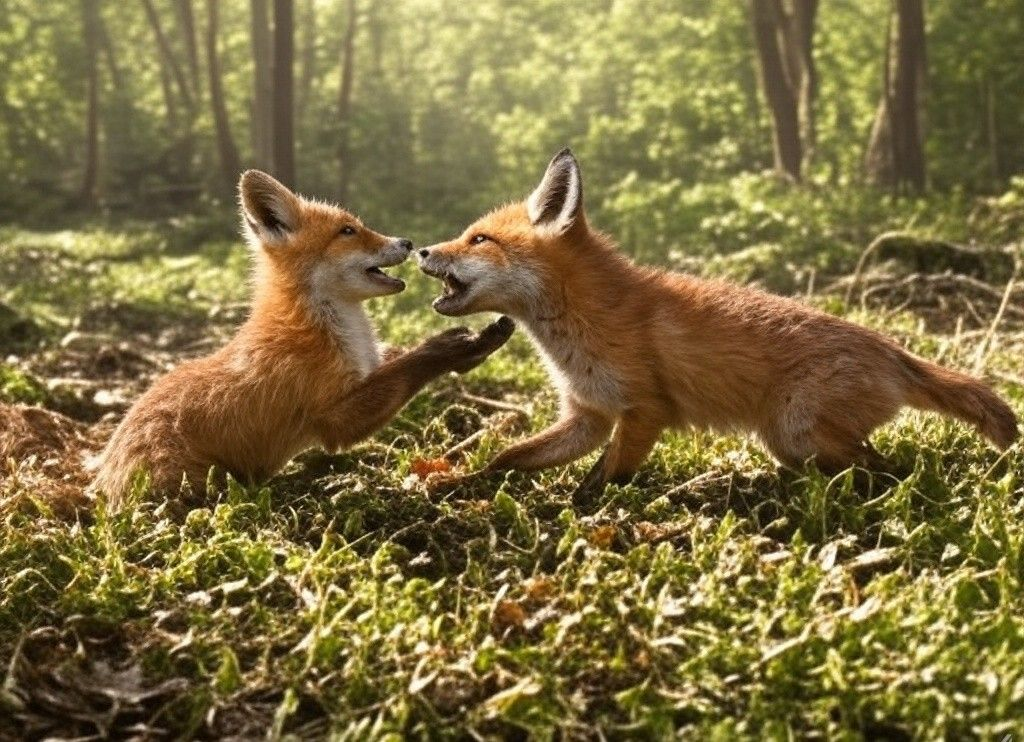
Healthy ecosystems don’t take sides. Forests, wetlands and meadows quietly absorb carbon, filter water and shelter biodiversity. When we restore them, we strengthen the natural systems that sustain every living thing - including ourselves.
Restoring nature also restores us. Time in wild places, even small ones, reduces stress, boosts creativity and reconnects us to something bigger than our screens and schedules. It reminds us that we belong to the living world, not apart from it.
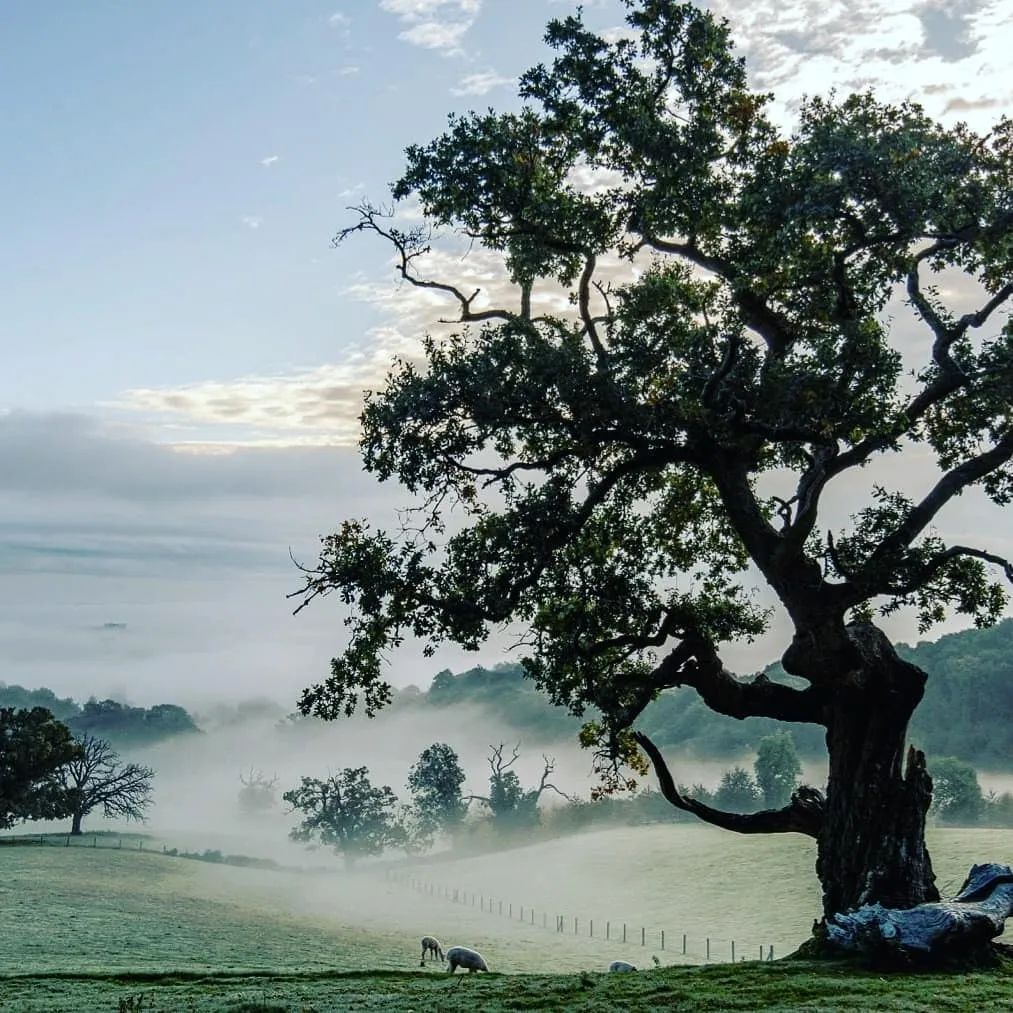
At LettsSafari , we’ve chosen to focus not on the politics of climate change, but on the practice of restoration. Our work is grounded in simple truths:
Nature is the ultimate climate stabiliser. Restored woodlands, grasslands, and wetlands act as carbon sinks, cool the air and regulate rainfall.
Biodiversity builds resilience. Diverse ecosystems are better able to withstand droughts, floods and other extremes.
People thrive when nature thrives. Restoration connects communities, fosters learning and improves wellbeing. It’s climate action with immediate human benefits.
The International Day of Climate Action is a chance to do something tangible - something everyone can feel good about:
Spend time in nature. Go for a walk, sit in a park, visit a local rewilding site.
Support restoration. Help plant native trees, clean up a riverbank, or subscribe to LettsSafari.
Share the message. Post about the natural places you love using hashtags like #ClimateAction #NatureRestoration #LettsSafari.
Climate change may divide us - but nature can unite us.
At LettsSafari, we’re turning that belief into action: restoring land, rebuilding ecosystems, and helping people reconnect with the natural world.
Join us. Act now. Restore nature. Restore hope. 🌿
****************************************
Subscribe to LettsSafari
Support our rewilding parks, get exclusive content about our projects AND receive expert tips to transform your garden, community, public or work spaces into a wildlife haven.
🌱 For every 10 new subscribers we plant a tree a year.
🦔 For every 100, we release an endangered animal.
🌳 And for every 10,000 we create a new rewilding safari park a year!
Make A Difference: Together We Can Rewild To Restore Nature.
Sign up TODAY
!